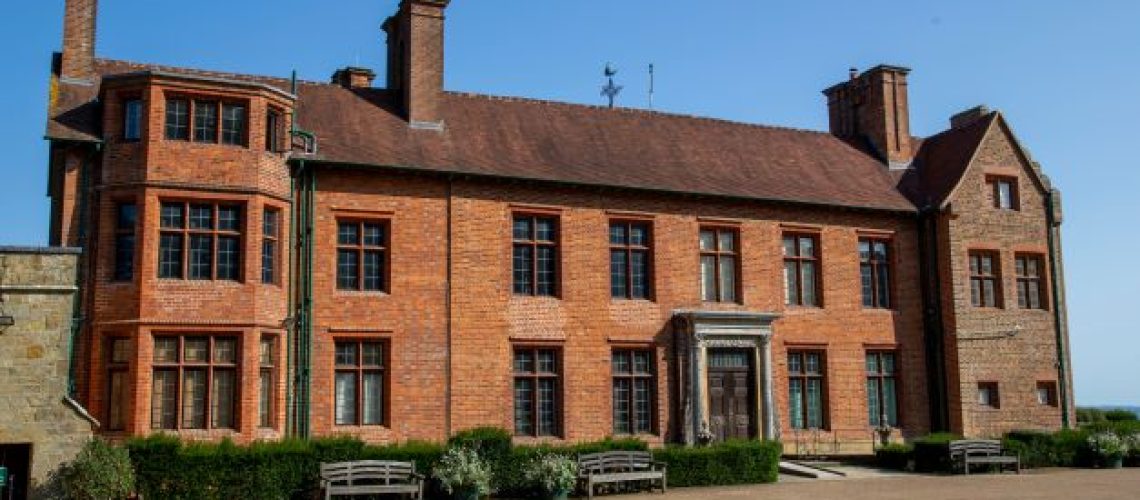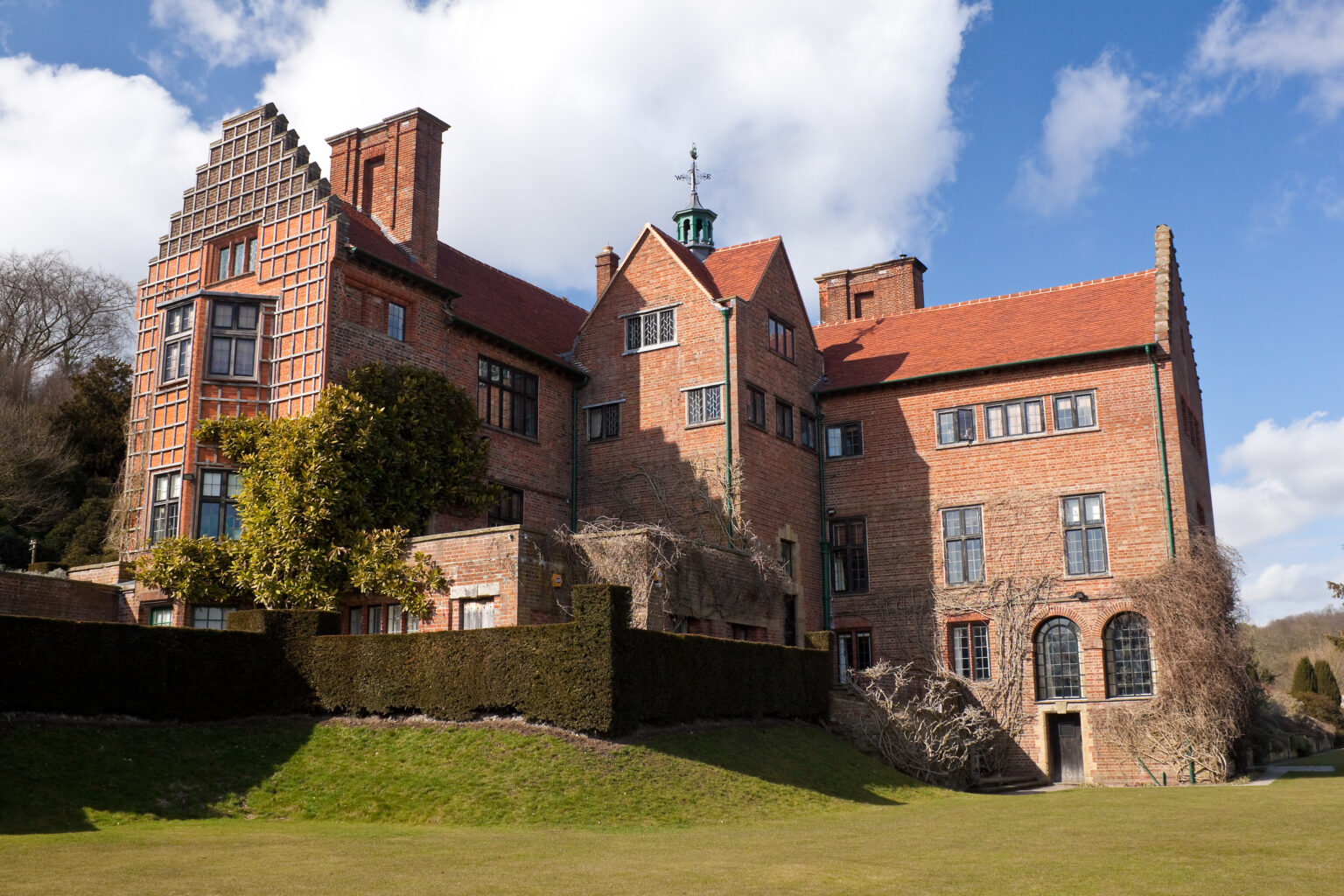


Chartwell House is located in the town of Westerham in Kent, England. It is about 30 miles (48 kilometers) southeast of London. Kent and is a Grade II* listed manor house. The house was originally built in the 16th century and has been added to and remodeled extensively over the years.
The house is perhaps most famous for being the home of Sir Winston Churchill from 1922 until he died in 1965. Churchill made many changes to the house during his time there, including adding the underground bunker that is now open to visitors.
The house is now open to the public, and visitors can explore the many rooms and admire the beautiful architecture and furnishings. In this article, we’ll take a closer look at Chartwell House, its history and architecture, and some of the interesting features that make it so special.
The architecture of Chartwell House is unique, mixing elements of classical and Gothic Revival styles. The building is constructed from red brick with stone dressings and has many unusual features, including two circular towers at the front.
Chartwell House was designed by the prominent English architect Sir Edwin Lutyens and completed in 1922. The home was originally built as a country retreat for the wealthy banker Sir Julius Wernher.
The house is perhaps most famous for being the residence of Sir Winston Churchill from the early 1940s until he died in 1965. Churchill made many changes and additions to the home, including turning the stables into a painting studio and installing a large indoor pool.
Since Churchill’s death, the house has been open to the public as a museum and a National Trust property. Many of the original furnishings and belongings of Churchill and his family are still on display, providing visitors with a unique insight into the life of one of the most important figures of the 20th century.
The architectural style of Chartwell House is an eclectic mix of Tudor, Georgian and Gothic Revival styles. You can see hints of each in the facade and the design of the roof. The result is a building that’s both imposing and elegant.
Chartwell House was built in the early 19th century for a wealthy merchant. It’s been home to many notable residents over the years, including Winston Churchill.
If you’re interested in English country houses, then Chartwell House is definitely worth a visit. It’s a fascinating example of how different styles can be combined to create a unique and beautiful building.
Construction on Chartwell House began in 1911, and it took seven years to complete. It was commissioned by Sir Julius Wernher, a German-born millionaire who made his fortune in mining. He left the house to the nation on his death.

As you explore the grounds of Chartwell House, many design features are sure to catch your eye. Much of the building is built in a Classical-Revival style, with bespoke details that give it an impressive, grand look.
Notably, you will find stone steps that lead to the ground floor entrance of the house, as well as curved and pillared verandas on all sides. The walls also feature protruding sections of red brick and white stone for a striking, yet timeless contrast.
Inside the house, you can also find marble fireplaces and brick arches. The ceilings have detailed cornices and windows are topped with pediments. And no matter which room you’re in, beautiful carpets line the floor in shades of red and blue.
Whether indoors or out, Chartwell House is full of thoughtful touches that make it a delight to behold – even for those unfamiliar with its history.
Spanning the centuries, Chartwell House Kent has seen many changes. The earliest records date back to 1511 when a William Cort owned the land. The house remained in the Cort family until 1741 when it was sold to William Finch, who made several alterations and additions to it.
By the end of the 18th century, the estate had passed into the hands of Thomas Fremantle, later Admiral Sir Thomas Fremantle and his descendants continued to own it until 1924. Chartwell House Kent then came into the ownership of Sir Winston Churchill and remained his family’s home until 1997.
The house itself is steeped in history, just take a look around and you can imagine Churchill himself walking these very grounds! Of course, there are more secrets to be uncovered – with some research you might find more fascinating details about its past owners or even uncover some unknown facts about its design and construction.
You may be interested to know about the frequently asked questions about Chartwell House Kent. There are some really interesting facts surrounding the history and architecture of this building that make it extra special.
How old is Chartwell House?
Chartwell House was built between 1872 and 1874. It was then renovated by Sir Winston Churchill in the early 1920s.
Who lived at Chartwell House?
Chartwell was the beloved home of Winston Churchill and his wife Clementine, who lived there from 1922 to 1965 when Winston passed away.
What architectural style is it?
Chartwell is an example of Victorian Gothic Revival architecture. Its distinctive turrets, battlements, and stone walls give it a unique castle-like appearance. It also has a classic redbrick facade with ornamental stonework.
Chartwell House is a hidden gem in Kent that is full of secrets. From its fascinating history to its elegant architecture, there is much to discover about this stately home. Make sure to add Chartwell House to your list of places to visit in Kent, you won’t be disappointed!
If you’re undertaking a building conservation or restoration project in Kent, be sure to check out the Tuscan Foundry.
Tuscan produces cast iron gutters and pipes that are used in Kent, the UK all over the world. Since 1893, Tuscan Foundry has provided cast metal products for period, listed, and traditional buildings with a full range of standard and bespoke castings for every application.
For cast iron guttering projects in Kent, please contact our sales office to discuss your project.